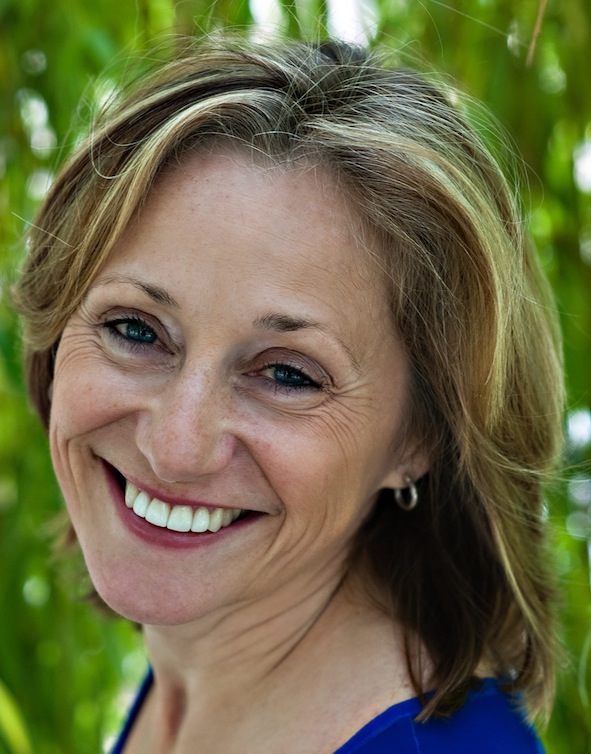Tag Archives: women
Pollen extract cuts menoapause symptoms – new study


Pollen extract could be used to help ease menopausal symptoms for women during the time of the menopause, new research has revealed*.
The 10 month trial, published in a recent issue of Genesis: The Journal of Genetics and Development, studied 417 menopausal women taking two tablets a day of Femal a specialised formulation of nutritional flower pollen extracts – at Bordeaux University in France.
The results indicated:
A significant reduction in the frequency of hot flushes by 65%
A reduction in the frequency of night sweats by 64%
The intensity of hot flushes was reduced amongst participants by 64%
The discomfort of night sweats was also reduced by 67%
A clear improvement in irritability and fatigue was noted and quality of sleep improved by 47%
93.5% of the participants felt the supplementation was effective in improving discomfort of symptoms associated with the menopause
Christian Lebreton from Hirapharm which manufactures Femal, commented: Adding to an already impressive body of evidence supporting the benefits of pollen extract for women experiencing PMS or the menopause, this study confirms the extremely positive indications of supplementation for the 75% of Western women who suffer with menopausal sysmptoms.
Femal contains two special extracts of standardised pollen combined with vitamin E, formulated to support womens health throughout the life stages from the start of womanhood to maturity. Femal is available from Boots and independent pharmacies priced around £16.00. For further information about Femal, contact UK telephone number + 44 (0)1372 379828.
References:
* Assessment of the tolerance and effectiveness of a food supplement Serelys (Femal) for menopausal women. Elia, D., and Mares, P., 2008. Genesis, 135, November 2008
Femal
Femal, Scandinavias number one selling formula, is the result of 10 years of research and development that began with the biochemical analysis of more than 400 plants. Clinical research and development has consistently established the health benefits of seven specific nutritional flower extracts and their role in supporting womens health.
Flowers are glorious manifestations of natures healing and balancing power, offering us health and vitality. Pollen is nutrient-dense and guarantees the proliferation of the plant world and our healthy existence. Femal gives you the essence of pollen in 100% bioavailable form.
Vitamins, carotenoids, flavonoids, minerals, amino acids, fatty acids, enzymes phytosterols and prostaglandins all form a part of pollen, making it the perfect building material for our cells. Femal helps safeguard the intake of these nutrients on a daily basis.
Frequently Asked Questions
Will pollen cause an allergic reaction?
The pollen extracts in Femal have been specially treated to ensure minimal risk of allergic reaction. Most allergic reactions to pollen are caused through airborne particles that then cause irritation of the airways. Since food supplements are digested, this reaction would be unlikely.
How many do I take?
It is recommended that two tablets per day would be the best intake, particularly when taking Femal for the first time. This intake can be adjusted to one tablet per day to suit individual requirements. This may be most comfortable with a glass of water or fruit juice in the morning.
Can I reduce the intake?
Everyone is different and therefore will have different requirements. However, some women find that they can reduce their long term usage down to one tablet a day once they have been taking Femal for a time. If at some point you feel that your requirements have changed and you feel reverting to a higher dose would be appropriate than it is perfectly acceptable to take two tablets for a three month period. It is not advised to exceed the recommended intake.
How long can I take Femal for?
As with many food supplements Femal is intended for use regularly over time and on a daily basis. Most women find that after three months the two tablets per day dose can be adjusted to one tablet per day. Femal is designed to be taken throughout a womans adult life and may therefore be used during the monthly cycle and during and after menopause. As a food supplement, it should be taken in addition to a varied and balanced diet and healthy lifestyle and should not be a substitute for either of these important aspects of healthy living.
Can I take Femal alongside medications?
It should be OK to take Femal alongside any medicines. However, should you have any concerns do consult your doctor.
Can I use Femal whilst pregnant and or when breastfeeding?
It is recommended that pregnant women and those breastfeeding should stop taking the product during this time. Whilst this is precautionary, if in doubt you should consult your doctor.
What other measures can I take?
You have already taken some steps in reading this. Supplementing your diet may provide your body with additional nutrients during its natural changes.
This may also be the time to look at your lifestyle and how this may affect your dietary needs, such as eating at least five fruit and vegetable servings per day and maybe reducing caffeine and alcohol consumption. Exercise is another important aspect in helping to keep your body in optimum health and you may want to consider how this may be incorporated in your daily routines. Keeping a diary may help to monitor your success.
Depression increases heart attack risk in women

New York: Women who suffer from clinical depression are more than twice as likely to die of a heart attack
A US study of more than 63,000 women suggested this could be because unhappy women are more likely to smoke, have high blood pressure and eat unhealthily.
The more depressed a woman is, the higher her risk of death from a sudden heart attack or chronic heart disease.
The most severe type of depression, clinical depression, is associated with a more than 100 per cent increased risk of a sudden cardiac death. The risk was even higher among women on antidepressant drugs – but this may be because these medicines are prescribed to the most depressed women.
Study leader Dr William Whang, of Columbia University, said: “It’s important for women with depression to be aware of the possible association with heart disease, and work with their healthcare providers to manage their risk for coronary heart disease.
“A significant part of the heightened risk for cardiac events seems to be explained by the fact that coronary heart disease risk factors such as high blood pressure, diabetes, elevated cholesterol, and smoking were more common among women with more severe depressive symptoms.’
In the Journal of the American College of Cardiology, Dr Sanjiv Narayan commented: “These data indicate the link between depression and serious heart rhythm problems may be more complex than previously thought. It raises the question of whether this association may have something to do with the antidepressant drugs used to treat depression.’
Selenium helps reduce bladder cancer risk

New York: Increasing selenium levels may help to significantly reduce a womans risk of developing bladder cancer, according to new research from the American Association for Cancer Research
Researchers measured selenium levels in the toenails of 767 people with bladder cancer and 1,108 people without the disease. Whilst no link was found between selenium levels and bladder cancer risk for the population as a whole, the mineral did significantly reduce the risk of bladder cancer in certain groups of people women, moderate smokers, and those with p53 positive cancer.
Lead researcher Margaret Karagas said: “Ultimately, if it is true that selenium can prevent a certain subset of individuals, like women, from developing bladder cancer, or prevent certain types of tumors, such as those evolving through the p53 pathway, from developing, it gives us clues about how the tumors could be prevented in the future and potentially lead to chemopreventive efforts.”
Older women are happier than men


London: UK scientists who questioned nearly 9,800 people over the age of 50 about their lives and found women were more optimistic than men.
Wealth also helps you live longer with the poorest people more than twice as likely to die at any given age than the richest, researchers at University College London discovered.
Report co-author Dr Elizabeth Breeze said that women could become happier as they get older as they no longer have to worry about looking after their families.
She said: “There is a difference between the way men and women view their quality of life and they are influenced by slightly different things.”
“Women are affected negatively by caring for someone else or if they are not in employment but if they see their children and family more they are positively affected.”
Examples might be actresses Meryl Streep, 59, Helen Mirren, 62, and Judi Dench, 72.
Last year, Mirren said: “A weird thing happens to male actors, especially movie stars, in my experience.
“They become grumpy old men. A young male actor feels that all the girls want him – he’s a star. As actors get older that sense of not being in control of their destiny grates on them and they get grumpy.”
Researchers interviewed people born before 1952 at two year intervals.
They found that the poorest fifth of the population were over twice as likely to have died by 2008 as those in the wealthiest fifth.
In some age groups, the difference was even greater with the poorest women between 60 and 74 six times more likely to have died than the richest women of the same age.
According to the study, you have more chance of living longer if you are married, educated to degree level and a professional.
Single people are twice as likely to die early as those who are married or living with a partner.
The study found that exercise increases life expectancy with the physically inactive twice as likely to die before those keeping fit.

Exercise does not suppress appetite in obese women

New York: Researchers at the University of Michigan have found that exercise does not suppress appetite in obese women, as it does in lean women.
Katarina Borer, PhD, a University of Michigan researcher and lead author of the study said that this lack of appetite suppression may promote greater food intake after exercise in obese women.
“This information will help therapists and physicians understand the limitations of exercise in appetite control for weight loss in obese people, she added.
Borer and her co-workers sought to better understand how changes in body fat level influence appetite and a hormone called leptin, which in animals curbs appetite when body fat increases.
When leptin levels rise, it supposedly shuts off appetite and motivates physical activity to burn calories. However, as obese people become fatter, their leptin levels rise, but they become resistant to the actions of this hormone.
“The hormone doesn’t do the job it’s supposed to do in lean people,” Borer said.
In research funded by the National Institutes of Health, Borer’s group studied 20 postmenopausal women: 10 lean and 10 obese women. The women ate three weight-maintenance meals a day while participating in three experiments on three separate days. During one experiment they did not exercise.
In the other two experiments the women exercised on a treadmill in the morning and the afternoon. They burned 500 calories each time, for a total of 1,000 calories a day.
These two experiments differed by exercise intensity. One involved walking at high intensity, or 80 percent of maximal effort, for 7.5 minutes, with 10-minute rest periods between 10 walking sessions. The other experiment was half as intense (40 percent of peak effort) and involved walking for 15 minutes and resting for 5 minutes.
Every hour and before each meal, subjects recorded their appetite level on a 10-point scale ranging from not at all hungry to extremely hungry. Blood samples were collected every 15 to 60 minutes for hormone measurements.
Obese women claimed they were less hungry than lean women before meals and reported no appetite suppression during exercise, Borer said.
As expected, obese women had much higher leptin levels than in lean women, study data showed.
But during intense exercise, obese women did not have reduced production of leptin, as lean women did. Only moderate-intensity exercise lowered leptin in obese women.
“Obesity interferes with leptin’s detection of exercise energy expenditure and with appetite suppression,” Borer said.
“Obese women perhaps need to consciously watch their calories because some of the hormonal satiety [fullness] signals don’t seem to work as well.”
Exercise for 10 minutes a day improves health

New York: Just 10 minutes of exercise daily can improve the lives of overweight or obese older woman, new research has found.
In a study of 430 overweight, postmenopausal women who took part in various amounts of exercise each week- some as little as 70 minutes a week and others as much as 190 minutes a week, over a six month period.
Most of the exercise was done in three to four sessions per week. When the women were not enrolled in some kind of organized exercise, they were fitted with pedometers and told to simply go for walks to fill their exercise quotas.
Those who did the most exercise reaped the most benefits. But even those women who exercised just 10 minutes a day noticed improvements.
The women reported they felt better physically, emotionally and they could perform everyday tasks better, such as climbing stairs and carrying groceries. The women improved:
* almost 7 per cent in physical function and general health,
* 16.6 per cent in vitality,
* 11.5 per cent in performing work or other activities,
* 11.6 per cent in emotional health
* and more than 5 per cent in social functioning.
Some of the women did lose weight over the six months. But the researchers found that it didn’t matter even if they didn’t; just getting out and about exercising improved their overall quality of life.
Researcher and study co-author Angela Thompson of the Pennington Biomedical Research Center, Baton Rouge, La said: “The public health message is tremendous, because it provides further support for the notion that even if someone cannot exercise an hour or more daily, getting out and exercising 10 to 30 minutes per day is beneficial, too.”
The research was presented Thursday at the American Heart Association’s Conference on Nutrition, Physical Activity and Metabolism.
“This is the first large controlled study of postmenopausal women to look at the effect of exercise training on the quality of life,” added Dr. Timothy S. Church, principal investigator and research director at Pennington. “It shows that exercise gives you energy and makes you feel better.”
“Walking a little bit every day will help tremendously,” Thompson added. “Walk with your mother, a neighbor or friend. A little physical activity will improve your quality of life.”
Chocolate may increase bone health risk

Sydney: Scientists have discovered that chocolate may increase the likelihood of osteoporosis and bone fractures in women.
In a new study published in the American Journal of Clinical Nutrition women who ate chocolate every day were found to have less dense bones than those who ate it less than once a week. according to scientists at the University of Western Australia.
Chocolate containing high levels of flavanols has recently been found to have beneficial health effects, particularly on the cardivascular system. But most chocolates do not contain high levels of this substance and manufacturers rarely label their products with health information.
In the Australian study, scientists monitored the amount of chocolate eaten over several weeks by 1,001 women aged 70 to 85. They then measured the bone density and strength of each woman using X-rays. The researchers found the women who ate chocolate less than once a week had significantly stronger bones than those who consumed the treat on a daily basis. Low bone density was found in the hips, neck, tibia and heel bones of the women surveyed.
The researchers believe the findings may be because chocolate contains oxalate, which can reduce calcium absorption, and sugar, which is linked to calcium excretion. Calcium is vital for maintaining healthy bones.
Why women prefer face creams to fast cars, by Clarins

London: Women will spend £25,776 in their lifetime pampering themselves, according to new research.
Each year the average woman will spend £379-a-year – or £32-a-month – on skincare, treatments and beauty products.
The beauty conscious spend the biggest chunk of that looking after their skin, with the average woman splashing out £11,424 on moisturisers and cleansers, in their lifetime, or £168-each-year.
Feel good treatments such as massages, facials and tanning take up another £8,066 during a woman’s lifetime while hair cuts, creams and cosmetics costs a total of £6,286.
A spokesman for skincare and make-up specialists Clarins, which carried out the research, said: ”It’s reassuring that women today have the confidence to know that ‘me-time’ spent in the beauty salon and at the beauty counter is money well spent.”
Women in London spend more than other women in the UK on looking after themselves, splashing out on £801.12-a-year – or £54,476 in their lifetime, more than twice the national average.
But at the other end of the scale Bristol girls aren’t quite as self-conscious, as they only spend £276 a year – or a total of £18,776 in their lifetime.
It’s not surprising women spend so much money trying to improve their appearance – the poll, of 2,000 women,l found that almost 60 per cent say looking their best is the most important thing to them.
A huge 93 per cent of women even think that the way they look has a massive affect on how they feel.
Lynda Tarpey (corr), owner of Pretty Woman, an award-winning beauty salon in Leeds, said: ”A facial or body treatment can work wonders in just one hour to help you de-stress and feel more confident.
”One of our most popular at present is a Radiance Ritual Facial from Clarins which revives tired looking skin that’s lost its sparkle.”
However, more than half aren’t happy with the way they look and eight out of 10 women reckon they are constantly judged on what they look like.
A desperate 43 per cent would even consider turning to cosmetic surgery, with teeth-straightening the most popular procedure followed by a tummy tuck and liposuction.
The poll also found that a lazy 32 per cent of women don’t bother to take their make-up off before they go to bed, with girls in Exeter the worst culprits.
In Cardiff only 20 per cent of women polled wake-up wearing make-up from the night before.
Raj Aggarwal (corr), who runs Cardiff’s Clarins salon, said: ”You can’t put a price on looking good.
”For most people, if they look great on the outside, they feel good on the inside and tend to be happier.”
The survey also found that a quarter of Wigan women reckon their partners would find them UGLY if they didn’t use moisturiser.
A third of Brits admit to wearing fake tan in order to look good with London women most likely to go under a sun bed.
However, one in 10 of those polled think people who spend so much time on themselves are vain and should get a life.
UK BEAUTY CAPITALS – MONEY SPENT ON LOOKING GOOD A MONTH
1. London 66.76
2. Southampton 63.5
3. Liverpool 46
4. Leeds 40.51
5. Birmingham 33.7
6. Derby 31.09
7. Wigan 30.79
8. Belfast 30.43
9. Coventry 29.34
10. Cardiff 28.82
11. Cambridge 27.86
12. Sheffield 27.84
13. Brighton 27.35
14. Newcastle 26.04
15. Bradford 25.74
16. Swansea 25.48
17. Norwich 25.35
18. Reading 24.17
19. Nottingham 24.02
20. Bristol 23.01
FIVE THINGS YOU COULD BUY FOR £26,000
*1 Lotus Elise S
*306 tickets to watch the Spice Girls
*34 weeks at the Four Seasons Resort, Whistler Mountain, Canada
*29 return flights to Sydney, Australia
*314 tickets to Disneyland Paris
HRT blamed for 1,000 ovarian cancer deaths
London: Women taking hormone replacement therapy are 20% more likely to suffer from ovarian cancer, claims a new report. More more than 1,000 women died in the last 15 years after contracting ovarian cancer following hormone replacement therapy it says.
The study published in the latest issue of The Lancet medical journal etimates that 70 deaths a yar are connected to taking the therapy which is dogged with controversy and confusion.
US researchers recently produced evidence to suggest that women int heir 50s on HRT are protected from heart attachs and premature death. This contradicted earlier claims that it put women at risk of heart disease.
This latest study, sponsored by Million Women Study, was started in 1996 suggests that more than 1,300 extra cases of ovarian cancer occured between 1991 and 2005. Of these women, 1,000 died of the disease. It reveals a 20 per cent increase in risk of the disease in women who have taken HRT for at least five years, but says it does not persist if women give up. The study, largely funded by Cancer Research UK, looked at responses from 948,576 postmenopausal women over seven years. It has previously linked HRT with breast cancer.
Overall the statistics mean that over a five-year period there is likely to be one extra case of ovarian cancer among every 2,500 women receiving hormone replacement therapy. For every 3,300 women on HRT, there is estimated to be one additional death from ovarian cancer.
HRT prescribed by the UK’s National Health Service is artificially made hormone replacement usually made from mare’s urine. It is used to combat symptoms of the menopause, including hot flushes, vaginal dryness and night sweats, with a range of drugs including tablets, implants and patches.
Safety concerns led to drug regulatory authorities in the UK and other countries issuing restrictions, including the advice to use it for the shortest time possible, which have continued to deter women from getting treatment. It has been blamed for both womb and breast cancer.GP data shows the number of British women on HRT halved from two to one million between 2002 and 2005.
Women grumpier than men first thing
London: Women are grumpier than men in the morning. They are not only grumpier more often than men but they are grumpier for longer, according to a new survey from the UK’s Sleep Council.
It reports that 24% of men say they never wake up in a bad mood as opposed to only 14% of women. The fairer sex is also more likely to stay grumpier for longer with 13% of them staying in a bad mood for two to four hours (men 10%). The survey, published ahead of National Sleep In Day on October 29 the day the clocks go back and we all get an extra hour in bed found 41% of us believe lack of sleep is the main reason for grumpiness in the morning.
As men appear to sleep better than women (15% get a good seven nights
sleep a week as opposed to only 9% of women), perhaps its not surprising that more women than men get out of bed on the wrong side, says Jessica Alexander of The Sleep Council.
Overall nearly one in five of the population (18%) say they never really get a good nights sleep: and techniques for doing so show a male/female split too. A worrying one in five men use a stiff drink (18%) and/ or sex (19%) to get off to sleep while women are more likely to read (57%), take a hot bath (28%) or have a sleeping pill (7%). A quarter (24%) of those questioned cited general stress and worry as a reason for early morning moodiness while 15% couldnt face climbing out of a cosy, comfortable bed.
The comfort of a bed was quite a significant factor in these results, says Jessica Alexander. Because while many people find it hard to tear themselves out of a comfortable bed in the morning, another 10% of participants cited a bad bed as a reason for poor sleep. Clearly these people either need to replace their bed more often or pay more for something in which they spend a third of their lives.
The over 45 age-group fares worst of all in the sleep starvation stakes with a massive 44% saying they never get a good nights sleep. Could this be connected to the fact they are the most likely people to have teenagers?And teenagers are the moodiest of all with 25% staying so for up to four hours.
There are clear regional differences too with London home to Great Britains Grumpiest: a whopping 19% maintain a bad mood for two to four hours while Northern Ireland leads the way in sheer numbers. More than a third (35%) of respondents here feel crabby for the first hour or so after waking. Worst areas for bad sleepers are Yorkshire and the North East where only 6.8% and 6.7% get seven nights of good sleep. In the South East and East, people get twice as much good sleep with 14% enjoying seven sound nights
sleep.
In London, 27% believe that when they wake up in a bad mood, stress is the most likely cause, says Jessica. This is interesting because Londoners, along with the rest of the South East, generally tend to be better sleepers. The fact that 18% of people in the North East never feel at their best compared to 7% in London represents a huge regional difference. We suspect the souths better sleep patterns may be linked to greater wealth, better diet, more exercise perhaps even higher spending on beds.
Londoners also exercise most in the morning to get their day off to a good start while North Westerners are the swiftest at getting ready for work more than a third (35%) do so in just 10 20 minutes. In Scotland they check their emails more than anywhere else and in the South West they ensure the house is spick and span before they leave.
Which brings us right back round to why women are the grumpier sex in the morning, says Jessica. Our survey showed that 28% of them as opposed to only 5% of men do any housekeeping before going to work. It also tends to be them that prepares the breakfast, spends time with the children, check their emails and attend to their beauty regime. Women far outweigh men in having a busy and packed morning.
So what do men do? Apparently just get up and go out: 17% of them spend only 10 minutes on their wake up and get out routine.
Said Jessica: As a nation we are simply not taking time in the morning to exercise, chat to the kids, our partners or even our pets. This would suggest that people dont have the time in the morning to do this because they are probably going to bed too late at night, sleeping in too late and not achieving the quality of sleep they need to feel and perform at their best. One in 10 people told us they are never at their best in the morning but the cure to that isnt rocket science. Its about good diet, good exercise, and good sleep in a good bed.
REGIONAL RESULTS: East 14% never get a really decent sleep in a typical week 52% blame stress/worry for the reason they have trouble sleeping 19% blame their partners snoring for the reason they have trouble sleeping
15% blame back pain for the reason they have trouble sleeping 14% blame having to climb out of a cosy, comfortable bed for feeling grumpy
42% find reading helps them to get to sleep 13% list sex as a technique to get to sleep 11% find having a stiff drink helps them to get to sleep London 13% never get a really decent sleep in a typical week 63% blame stress/worry for the reason they have trouble sleeping 26% blame their partners snoring for the reason they have trouble sleeping
13% blame back pain for the reason they have trouble sleeping 16% blame having to climb out of a cosy, comfortable bed for feeling grumpy
54% find reading helps them to get to sleep 19% list sex as a technique to get to sleep 13% find having a stiff drink helps them to get to sleep Midlands 20% never get a really decent sleep in a typical week 58% blame stress/worry for the reason they have trouble sleeping 21% blame their partners snoring for the reason they have trouble sleeping
14% blame back pain for the reason they have trouble sleeping 17% blame having to climb out of a cosy, comfortable bed for feeling grumpy
48% find reading helps them to get to sleep 15% list sex as a technique to get to sleep 14% find having a stiff drink helps them to get to sleep North East 21% never get a really decent sleep in a typical week 63% blame stress/worry for the reason they have trouble sleeping 30% blame their partners snoring for the reason they have trouble sleeping
25% blame back pain for the reason they have trouble sleeping 15% blame having to climb out of a cosy, comfortable bed for feeling grumpy
48% find reading helps them to get to sleep 15% list sex as a technique to get to sleep 8% find having a stiff drink helps them to get to sleep North West 17% never get a really decent sleep in a typical week 56% blame stress/worry for the reason they have trouble sleeping 21% blame their partners snoring for the reason they have trouble sleeping
18% blame back pain for the reason they have trouble sleeping 15% blame having to climb out of a cosy, comfortable bed for feeling grumpy
48% find reading helps them to get to sleep 11% list sex as a technique to get to sleep 13% find having a stiff drink helps them to get to sleep Northern Ireland 17% never get a really decent sleep in a typical week 69% blame stress/worry for the reason they have trouble sleeping 21% blame their partners snoring for the reason they have trouble sleeping
17% blame back pain for the reason they have trouble sleeping 14% blame having to climb out of a cosy, comfortable bed for feeling grumpy
59% find reading helps them to get to sleep 7% list sex as a technique to get to sleep 10% find having a stiff drink helps them to get to sleep Scotland 22% never get a really decent sleep in a typical week 48% blame stress/worry for the reason they have trouble sleeping 18% blame their partners snoring for the reason they have trouble sleeping
15% blame back pain for the reason they have trouble sleeping 14% blame having to climb out of a cosy, comfortable bed for feeling grumpy
51% find reading helps them to get to sleep 13% list sex as a technique to get to sleep 9% find having a stiff drink helps them to get to sleep South East 17% never get a really decent sleep in a typical week 55% blame stress/worry for the reason they have trouble sleeping 26% blame their partners snoring for the reason they have trouble sleeping
14% blame back pain for the reason they have trouble sleeping 15% blame having to climb out of a cosy, comfortable bed for feeling grumpy
53% find reading helps them to get to sleep 17% list sex as a technique to get to sleep 15% find having a stiff drink helps them to get to sleep South West 21% never get a really decent sleep in a typical week 59% blame stress/worry for the reason they have trouble sleeping 30% blame their partners snoring for the reason they have trouble sleeping
19% blame back pain for the reason they have trouble sleeping 12% blame having to climb out of a cosy, comfortable bed for feeling grumpy
43% find reading helps them to get to sleep 16% list sex as a technique to get to sleep 13% find having a stiff drink helps them to get to sleep Wales 24% never get a really decent sleep in a typical week 54% blame stress/worry for the reason they have trouble sleeping 16% blame their partners snoring for the reason they have trouble sleeping
13% blame back pain for the reason they have trouble sleeping 13% blame having to climb out of a cosy, comfortable bed for feeling grumpy
52% find reading helps them to get to sleep 11% list sex as a technique to get to sleep 17% find having a stiff drink helps them to get to sleep Yorkshire 22% never get a really decent sleep in a typical week 53% blame stress/worry for the reason they have trouble sleeping 25% blame their partners snoring for the reason they have trouble sleeping
15% blame back pain for the reason they have trouble sleeping 18% blame having to climb out of a cosy, comfortable bed for feeling grumpy
46% find reading helps them to get to sleep 13% list sex as a technique to get to sleep 19% find having a stiff drink helps them to get to sleep.
The Sleep Councils Grumpy Old Women survey was conducted online by Tickbox between October 2nd and 11th 2006 with a sample base of 2105. The Sleep Council is a generic body that aims to: Raise awareness of the importance of a good nights sleep to health
and wellbeing. Provide helpful advice and tips on how to improve sleep quality. Provide helpful advice on choosing the right bed for optimum
sleeping comfort.
The Sleep Council is funded by the National Bed Federation, the trade association for British bed manufacturers. The Sleep Council, High Corn Mill, Chapel Hill, Skipton, BD23 1NL UK Tel:
01756 791089. Web. www.sleepcouncil.com
Childless women die younger
London: Childless women have a 20 per cent higher risk of dying younger than those with two children, according to research from the UK’s Economic and Social Research Council.
The statistics also show that childless women also had a greater chance of developing diseases such as breast cancer.
About one in five women born in 1960, now reaching the end of their reproductive age, is childless. This compares to one in ten of those born in 1945.
The new research studied almost 100,000 women in the UK and the U.S. from 1911 onwards.
Professor Emily Grundy, of the Centre for Population Studies at the London School of Hygiene and Tropical Medicine, said that earlier research had already proven that childless women had a higher risk of breast cancer.
The researchers concluded that a happy family life has a positive influence on health.
The research found that women who wait fewer than 18 months between having children are likely to die younger than those who take their time to raise a family. Mothers with short gaps between births were more likely to develop long-term illnesses and had a 20 per cent higher death rate after 50.
Fathers from families where children were born in quick succession also appeared to suffer a higher mortality risk, but the effect was less pronounced.
Arthritis more likely for women smokers
San Francisco: Smoking increases the chance of developing rheumatoid arthritis in women who otherwise lack genetic risk factors for the disease, according to new published in the Annals of the Rheumatic Diseases.
Rheumatoid arthritis is a chronic, inflammatory disease in which the patients immune system attacks the joint linings. It is the most serious and debilitating form of arthritis.
Interaction between genes and environmental factors is considered to be fundamentally important in complex autoimmune diseases, such as rheumatoid arthritis.
The authors base their findings on a comparison of 115 postmenopausal women with the disease and 466 women without.
All the women were taking part in the Iowa Womens Health Study, a long term research project tracking participants lifestyles, such as smoking, and included the ages at which a woman started and gave up smoking and how many cigarettes she smoked every day.
The results showed that smoking almost doubled the odds of developing rheumatoid arthritis in women who had not inherited the most well established genetic risk factor for the disease, HLA-DRB1 SE.
However, among those women who had inherited the genetic risk factor HLA-DRB1 SE, exposure to tobacco smoke was not associated with an increased risk of the disease.
The authors point out that this research was limited to older white women, so it is not yet clear if other age groups and ethnicities would be similarly affected.
Women now live longer than men, even in the poorest countries
Sheffield: 2006 is likely to be the first year in human history when across almost all the world women can expect to outlive men, say researchers in the current issue of the British Medical Journal.
The trend towards this remarkable achievement will probably be confirmed this week in the 2006 world health report.
We tend to forget that in many countries of the world women could expect, until recently, to live fewer years than men and that maternal death in particular remains a big killer, write Danny Dorling and colleagues. In Europe, men last outlived women in the Netherlands in 1860 and in Italy in 1889. Elsewhere females life expectancy has long exceeded males: in Sweden since 1751, Denmark since 1835, England and Wales since 1841.
But in all western European countries the life expectancy gap between women and men is now narrowing.
Greater emancipation has freed women to demand better health care and to behave more like men, and most importantly to smoke, say the authors. As this transition is so recent, the processes driving it cannot be purely biological: they relate primarily to social change.
We must remember, though, that life expectancy data apply from birth onwards, so the picture would be different in some countries if life expectancy from conception was considered, they add. But even the life expectancy from birth may not be a permanent achievement, given that the largest remaining untapped market for cigarettes in the world is made up of women living in poorer countries, they conclude.
Click here to view full editorial: http://press.psprings.co.uk/bmj/april/edit808.pdf
UK women have lowest life expectancy in Europe, says new report
London: UK women have the lowest life expectancy in the European Union, according to a new report from the Office of National Statistics. But UK men are living longer than most in other European countries.
In a major report based on official statistics, the life expectancy for English men is 76.6 years, the second highest in the European Union which had an average male life expectancy of 74.8.
English women live longer than men, with a life expectancy of 80.9 years, but fare less well in comparison with the EU, where women live to 81.1 years on average. However, Britain is the second “fattest” nation in the EU, with more than a fifth of adults deemed obese, a figure second only to Greece.
Scotland has the lowest life expectancy for men (73.8 years) and women (79.1 years), and the greatest proportion of heavy smokers, a fact reflected in it also having the highest rate of lung cancer.
Wales has the lowest death rate among infants in 2003 and the highest proportion of disabled people in 2003-04.
In Northern Ireland in 2003, 17 per cent of 15-year-olds have some teeth missing due to decay. In England the figure is five per cent
Among the most worrying trends in the report, United Kingdom Health Statistics, was the level of sexually transmitted diseases, which was highest in England. The English rate of gonorrhoea infections in men was more than twice the rate for Scotland and Wales, and the English rate in women was twice the rate for Wales and four times that for Scotland.
Despite a rather poor impression of public health in Scotland, the country had the highest proportion of people taking part in high levels of physical activity, at all ages from 26 onwards.
In the UK, the most common type of health problem reported was arthritis and back pain, affecting about a third of men and women.One person in seven said they had considered suicide at some point.Anxiety and depression was suffered by seven per cent of men and 11 per cent of women.
World’s oldest woman found in Chechnya
At 124 years old Zabina Khakimova has been declared the world’s oldest person – and she still does the housework.
Zabina puts her longevity down to hard work, simple food and clean mountain air. Perhaps it also helps that she prays five times a day.
Whatever the secret, Zabani Khakimova was yesterday declared to be the world’s oldest living person at 124.
According to authorities in her native Chechnya, she remains in good health and continues to do housework and even a little babysitting for her huge extended family.
Mrs Khakimova, who lives in the Achkoi-Martan district of the mountainous and war-ravaged Russian republic, has 24 grandchildren, 38 greatgrandchildren and seven great-great grandchildren.
The claim the Chechens are making for her age would make her nine years older than the oldest person cited by the Guinness Book of Records, Kamato Kongo, from Japan, who is 115. She would even exceed the age reached by Jeanne Calment, the oldest ever person to be authenticated by the book’s researchers, who died in France in 1997 aged 122.
Assuming the claim is genuine, Mrs Khakimova has witnessed a century and a quarter of war, famine and revolution. She has lived under three Tsars and was 38 by the time of the Russian Revolution in 1917.
Since then she has seen her country convulsed by more than 70 years of Communism followed by a decade of civil war. She endured the mass deportation of her people to Kazakhstan in Central Asia in 1942 after the Chechens were accused by Stalin of collaboration with invading Nazi troops.
Thousands had died of hunger and disease before they were allowed to return after Stalin’s death, by which time Mrs Khakimova had lost her husband and eight of her ten children.
More recently she has witnessed the appalling devastation that followed Chechnya’s declaration of independence in 1992 and the Russian invasion that followed. Thousands of people died in the ensuing fighting.
Her home town witnessed the terrors of war with separatist troops planting mines and shooting at Russian soldiers, who in turn are accused of mistreating civilians as they hunted down guerikas.! Doctors who have examined Mrs Khakimova say she is in good health considering her age. Her only complaint has been a problem with her hearing over the pastcouple of years.
Her memory is not what it once was, course, and while insisting that she was indeed born in 1879, the Chechens have failed to pin down an actual date of birth.
Her youngest son, Mokhdan, is still alive and has ten children of his own. Another son, Akhdan, died just two years ago but is survived by his 14 children.
Mrs Khakimova’s life is said to have revolved around raising her children and growing vegetables for food.
These days, as well as working around the house, she looks after her great! grandchildren and great-great grandchildren, and never misses her prayer sessions.
The claim for her age was made by the Chechen deputy health minister Sultan Alimkhadzhiyev to a Russian news agency.
j
It would put her way ahead of Kamati Kongo, who”was born on September 1 1887, on Tokunoshima Island, Japan and who took the title aged 114 year and 183 days on the death of American Maude Farris-Luse in March 2002.
Mrs Farris-Luse had credited intake of boiled dandelion greens a fried fish for her longevity.
Last night a spokesman for the Guinness Book of Records said the Chech claim had not yet reached them.
“But if they can send us a birth certificate, medical records or witness sta ments backing up the claim we will investigate it,’ she added.
If official doubts were to be cast Mrs Khakimova’s age, it would not the first time in recent years that Russian longevity proclamations have be discredited.
In January 2001 the southern Russin republic of Dagestan reported that tl world’s oldest man, 134-year-old Gayirkhan Iriskhanov, lived in a local village. Then a Russian census December last year found that a Siberian woman, Pelageya Zakurdayeva, was born on June 6, 1886, making her the longest-living person in the world at 111.


